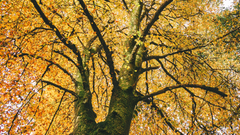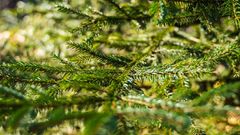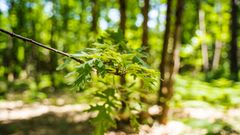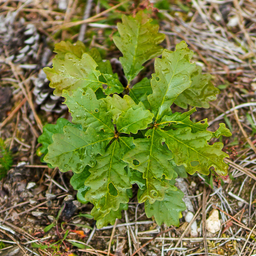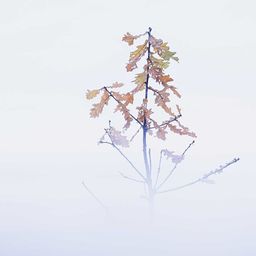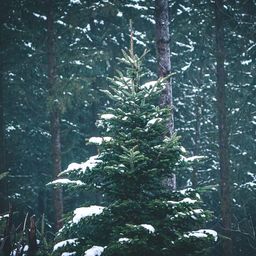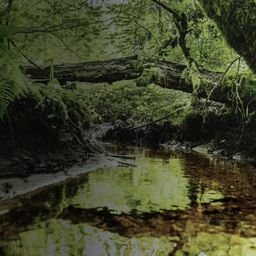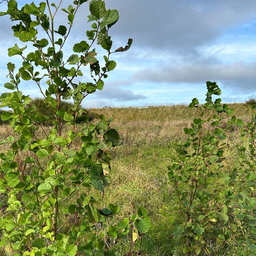Mar 8, 2022
Glossary: common words and concepts about forestry and trees
There are many words and concepts linked to forestry and trees. Our glossary explains some of the most common terms from the forest.

Want to learn more about forestry and trees? A good way to start is to quickly learn some of the most common words and phrases. Here at EcoTree, we want to help you with our dictionary of common forest and tree-related concepts.
Forestry phrases and tree terminology
This is the EcoTree glossary of good concepts to know when it comes to forestry and trees. Are we missing something? Feel free to let us know!
Biochar
Biochar is a carbon-rich charcoal that helps plants grow by improving the physical condition of the soil.
Deforestation
Deforestation describes the process of clearing a large area of trees. The land will often get used for agricultural or housing, but can also be a result of heavy tree felling to collect and sell the wood.
Felling
Felling is where one or more trees are harvested. Those trees are typically cut to make room for new trees or to thin the forest and create better growing conditions. When many trees are felled at the same time, it can lead to clear-cutting.
Stand
A stand is a large number of trees or plants that grow together. There is often something to connect them, such as the age or species of the trees.
Biological diversity (biodiversity)
Biological diversity (biodiversity) is the variety of plant and animal species in a specific habitat. Each area of natural beauty has its own unique environmental conditions that we need to protect and preserve.
Biomass
Biomass is plant-based material, including wood from trees, that is used for creating energy, such as heat and electricity.
Biotope
Biotope refers to a specific area of a natural habitat where particular plants and animals thrive.
Mixed forest
A mixed forest is one where two or more tree species grow side by side.
Target diameter harvesting (TDH)
Selective felling where the largest and coarsest trees are cut down once they reach a certain diameter. The trees that remain then have time to grow before it is time for the next round of felling.
Bearing trees
Bearing trees produce fruit and berries and include species such as oak, alder and rowan.
Cellulose
Cellulose is the main substance in the walls of cell plants, including the trees that grow in the forest. It is the most common organic substance and is used to make many things, such as paper, cardboard and clothes.
Ecosystem
Anecosystem is a natural, physical environment area and all of the plant and animal life that lives there. Ecosystems can be both huge and very small, and each has its own unique conditions.
Energy forestry
Energy forestry is where fast-growing trees are planted and grown to specifically produce biomass or biofuel for heating and electricity.
Eternity trees
Eternity trees are those left behind after final felling with the aim of increasing a habitat’s natural biodiversity.
Photosynthesis
Photosynthesis is essential to most life on Earth. It’s the process by which plants use sunlight, water and carbon dioxide to create oxygen and energy in the form of glucose, a type of sugar.
Topsoil
The upper layer of soil that usually contains organic material, such as dead plant parts, animal remains and faeces. Fungi, plants and small animals also live and thrive in topsoil.
Thinning
Thinning is a forestry process where diseased or lower quality trees are cut to give other trees more room to grow successfully.
Bark beetle
There are many types of bark beetles and they can be a real pest in the forest. They reproduce by the male digging through the bark of spruces, which means beetle infestations can do great damage to spruce forests.
Germination
Germination is the stage in a tree's life cycle when the plant begins to grow inside the seed before the root shoots through and starts taking in water.
Hectare
A hectare is a way of measuring the size of a forest area. One hectare is equal to 10,000m² or approximately two football fields.
Hemicellulose
Hemicellulose is a substance that dominates plant cell walls along with cellulose and lignin. It has a much weaker structure than cellulose.
Humus
Nothing to do with hummus or chickpeas, humus is the organic material found in soil when plants and animals decay.
Sustainable forestry
Sustainable forestry considers all parts of the forest, including its trees, plants, water and animal life. The aim is to maintain the forest over time to produce positive ecological, social and economic benefits to the land.
Soil type
Soil type is defined by the materials and substances it contains. Knowing whether a soil type is clay, sand, silt, loam, peat or chalk helps determine what trees and plants will grow there.
Clearcutting
Clearcutting is the process of felling most or all trees in an often large area. It typically leads to open land where just tree stumps and tree remains are left behind.
Woodland edge
A woodland edge or forest edge refers to the transition zone where the forest borders another type of land or open space, such as arable land or a watercourse. When managing a forest, this transition should be around 25 metres.
Carbon sink
Anything that absorbs more carbon dioxide from the atmosphere than it releases can be called a carbon sink. Forests are one of the Earth’s largest and best carbon sinks.
Plantation forest
Plantation forests or artificial forests are those planted by humans, as opposed to naturally regenerated. They are often used for commercial timber production and typically feature just one or two tree species.
Lignin
Lignin is a collective term for a series of substances that are important in forming plant cell walls. It is one of the most common organic substances and helps give trees their strength because lignings do not bend or rot easily.
Environmental Protection Act
In the UK, the Environmental Protection Act 1990 is a set of regulations designed to protect the environment, including forests and woodland areas.
Monoculture
A monoculture forest is where there is only one or very few tree species.
Multiple-use forest
Multiple-use forests are those that provide more than just timber and crops, such as water, recreation and other activities.
Natural forest
Natural forests are those that have not been affected by human activity for a long time. Primary natural forests are very old and have seen very little disturbance at all, whereas secondary natural forests have regrown after harvesting or clearing.
Key species
A key species is a plant or animal species that is extremely important to an ecosystem and other species that live there.
Key biotope
An especially important part of the forest that typically features endangered or rare organisms and animals that are vital to the future of the area.
Life cycle
The life cycle of a tree is the time it takes and the stages it goes through from when it is planted to its final felling.
Forestry (forest management)
Forestry is the science of managing forest land to produce raw materials, such as timber, firewood and fuel.
Forestry plan
Foresters develop and use a forestry plan to create goals, plan work and manage the finances of a forest.
Agroforestry
Agroforestry is where trees and shrubs are grown alongside crop and livestock farming.
Final felling
Final felling is the last phase in the harvesting process where trees in an older stand are cut to make room for new trees.
Old-growth forest
Old-growth forests – often called primary forests – have not been exposed to human activity, such as agriculture or forestry. As a result, they often have unique ecological characteristics.
Windthrow
Windthrow refers to trees that are felled as a result of a storm or strong wind.
Hardwood forest
A hardwood forest contains at least 70 percent deciduous trees and at least 50 percent noble deciduous trees, such as ash, beech, oak and maple.
Support the forests – buy trees at EcoTree
So that’s it – hopefully you found the information you needed in our forest glossary. We’re always happy to talk about trees and enjoy nothing more than explaining our approach to sustainable forest management.
We want to educate people and companies in the ways of the woodlands. The more we all know, the easier it will be to secure the future of the forest, including its biodiversity and contribution to climate change.
Ready to become a tree owner?
Our unique model means anyone can own a tree – including you! You can take a look at how it all works or pick your favourite species from the EcoTree treeshop.
